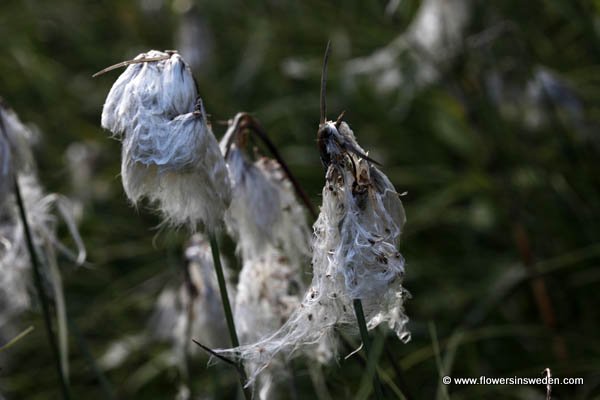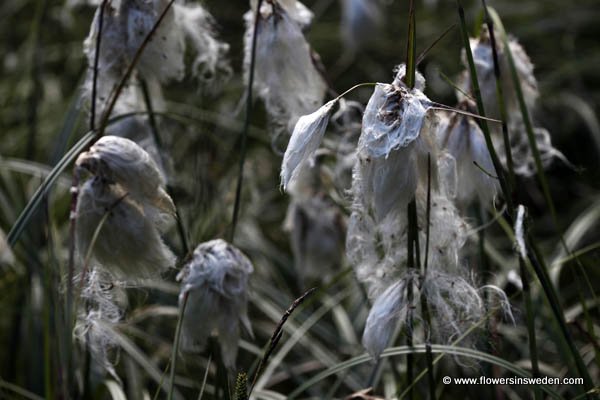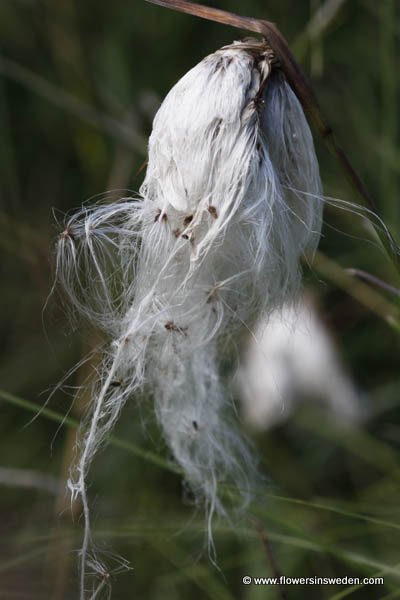|
|
| Life form: |
| Laxly caespitose; Perennial |
| Stems: |
| Height 25-45 cm, tufted stems rough stalks with minute teeth; peduncle scabrid |
| Leaves: |
| 3-8 mm wide, flat |
| Flowers: |
| Cottony heads c. 1-3 cm long; 2 to 12 heads |
| Flowering Period: |
| April-June |
| Fruits: |
| Seedlike achenia; Pappus hairs forked at ends |
| Habitat: |
| Fens, calcareous flushes, bare stony non-calcareous flushes, dune slacks,
often on firm ground. |
| Distribution: |
| From Skåne to Jämtland; further north it is rare |

Derivation of the botanical name:
Eriophorum from the Greek, erion, "wool", and forew (phoreo), "to bring or carry"; hence, "wool bearing",
latifolium, Latin latus, Latin, broad; folium, leaves, broad-bladed.
- The standard author abbreviation Hoppe is used to indicate David Heinrich Hoppe (1760 – 1846), a German pharmacist, botanist and physician.

|



